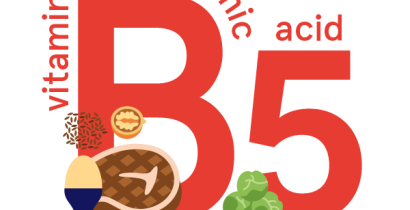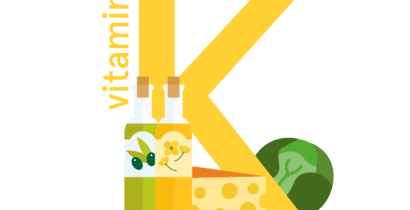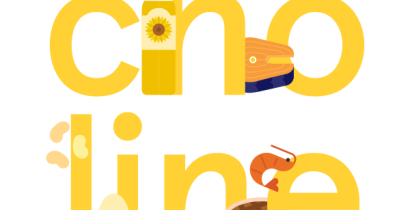Vitamin E: foods, functions, how much do you need & more
Last Updated : 11 January 2021Vitamin E is a common ingredient in skincare products, used for its anti-aging and cell-protecting properties. However, this vitamin does not only protect the cells of our skin but all the cells in the body against damage caused by free radicals.
What is vitamin E?
Vitamin E is a fat-soluble vitamin that exists in eight different forms; however, of those, our bodies only uses α-tocopherol.
What are the functions of vitamin E?
Vitamin E is one of our cells’ most important bodyguards, protecting their membranes from damage caused by free radicals. Free radicals are unstable molecules formed in our bodies during normal metabolism or during exposure to environmental factors, such as cigarette smoke or pollution. Vitamin E helps neutralise free radicals, preventing them from disrupting other molecules in cells and eventually causing irreparable damage to the cells’ function.
Vitamin E also keeps our blood cells healthy and helps our nerves functioning properly, by helping them carry messages between the brain and the body. Besides, it plays a role in preventing clots from forming in our blood and supports the healthy function of our immune system.
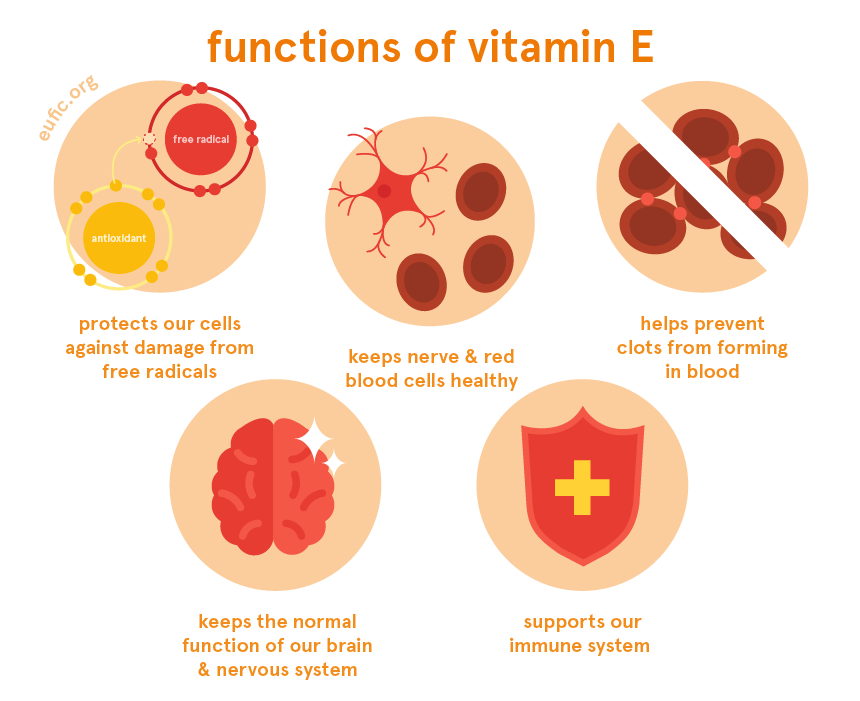
How much vitamin E do I need per day?
How much vitamin E you need per day changes according to your age, sex and life-stage.
The dietary reference value (DRV)* for healthy adults (over the age of 18), including during pregnancy and lactation, is between 11-13 mg of vitamin E per day.
We can get enough vitamin E from our diets by eating a variety of foods. Following your country's dietary guidelines on a healthy and balanced diet will help you meet your needs for vitamin E.
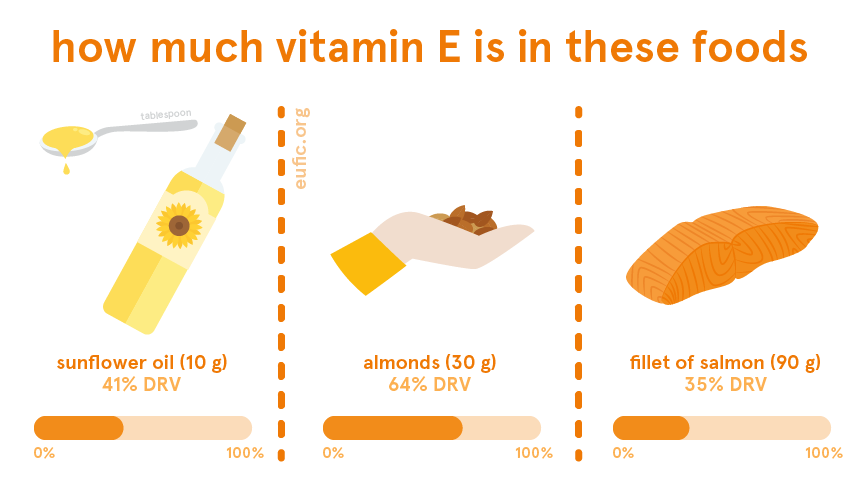
* These values are based on the adequate intake (AI) estimates from the European Food Safety Authority (EFSA). They should not be interpreted as nutrient goals.To know more about DRVs in Europe click here.
What foods contain vitamin E?
We can find vitamin E in a variety of foods, but some of its richest sources include:
- vegetable oils
- vegetable fat spreads
- nuts and seeds
- some fatty fish
- egg yolk
- whole-grain cereals.
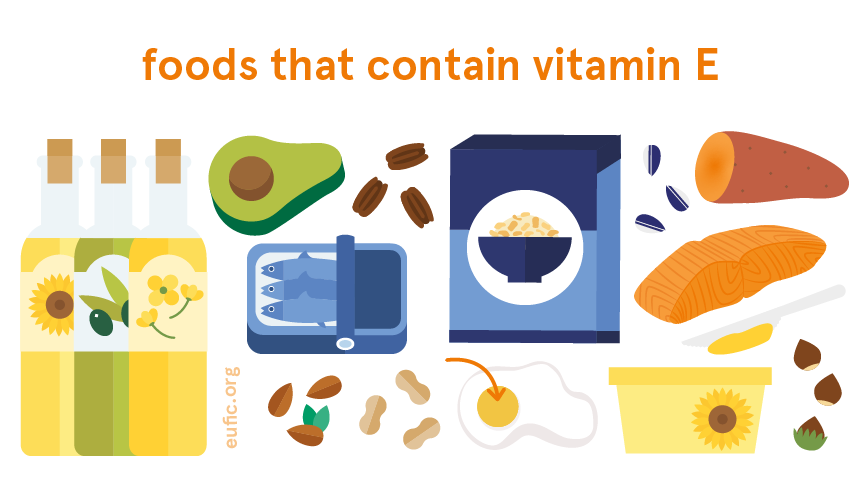
Does vitamin E interact with other nutrients?
Vitamin E and vitamin C often join forces in their antioxidant roles in our cells. When vitamin E neutralises a free radical, it loses its antioxidant properties, which can be regenerated with the help of vitamin C. Good levels of both these vitamins are particularly important for those who smoke, as they are more prone to form higher amounts of free radicals in the body.
In turn, excessive intakes of vitamin E can lower the levels of vitamin K, by causing our bodies to break down and remove more of the latter. This is particularly harmful to people who already have low levels of vitamin K (for example, due to specific health conditions or the use of anticoagulants), as it can impair normal blood clotting and increase the risk of bleeding.
Vitamin E is better absorbed when paired with foods that contain fats. Often, this vitamin is already abundant in naturally fatty foods, such as salmon, vegetable oils and nuts, which help its absorption in the gut. In other cases, it can be beneficial to combine vitamin-E rich foods (such as some whole grains), with healthy fats (such as olive oil), for the same effect.
What happens if I have too little Vitamin E?
Vitamin E deficiency is not common since most people get the recommended amounts for this vitamin from the diet. Usually, it happens to people with diseases that impair the absorption of fats and fat-soluble vitamins from foods.
In people with a genetic disorder that causes severe vitamin E deficiency, it can lead to neurological problems, such as poor coordination and muscle control. However, to this date, it’s still unknown what symptoms diets low in vitamin E can cause in healthy individuals.
What happens if I have too much Vitamin E?
Vitamin E from foods is not considered harmful since it’s unlikely we get too much of it from foods alone.
However, healthy adults, including during pregnancy and lactation, are advised not to have more than 300 mg of vitamin E per day, which is about 27 times more than the DRV for this vitamin.
Before taking vitamin E supplements, check with your doctor or consult a registered dietitian/nutritionist to discuss if there’s any value or risks in adding a supplement to your diet.
When should I pay extra attention to my vitamin E intake?
A vitamin E deficiency is not common for the general population since most people can get the recommended amounts of this vitamin from a varied and balanced diet.
References
- European Food Safety Authority. 2015. Scientific Opinion on Dietary Reference Values for vitamin E as α-tocopherol. EFSA Journal 2015;13(7):4149
- World Health Organization (WHO) (2004). Vitamin and mineral requirements in human nutrition. 2nd edition. Geneva, Switzerland: WHO.
- Public Health England. 2019. McCance and Widdowson’s Composition of Foods Integrated Dataset.
